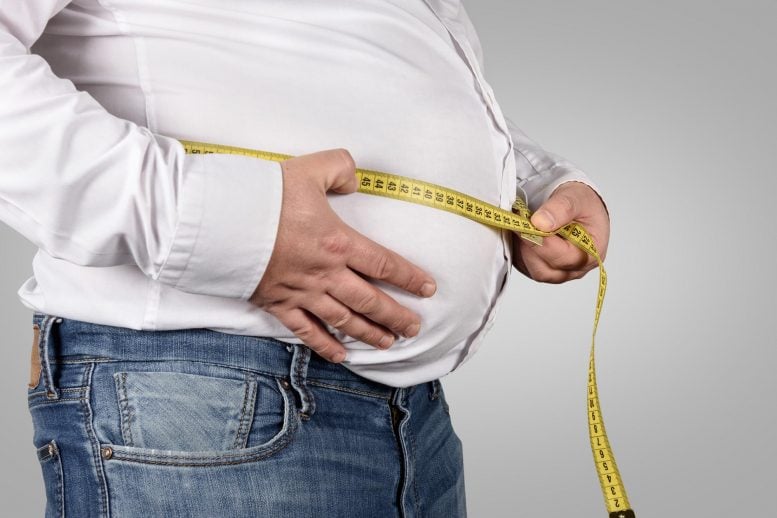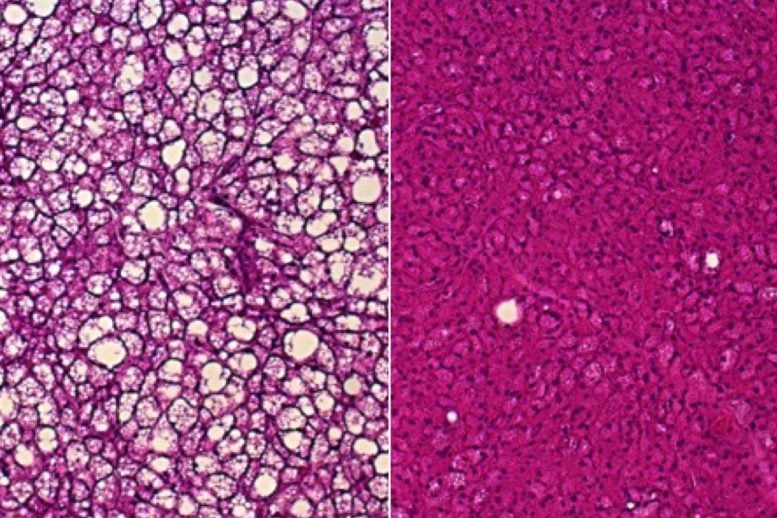
Posted on 09/25/2025 6:26:24 AM PDT by Red Badger

Researchers have identified a new “backup heater” in brown fat that burns energy in unexpected ways, pointing toward promising strategies for weight control and metabolic health. Credit: Stock Scientists discover alternative cellular process for producing heat that may enhance metabolic health.
Researchers at Washington University School of Medicine in St. Louis have uncovered a previously unknown mechanism by which brown fat — the type of fat that burns energy — can drive the body’s metabolism. In mouse studies, they found that brown fat can use cellular fuel to generate heat in a way that enhances metabolic health. These results point to new strategies for targeting brown fat in the treatment of conditions such as obesity and insulin resistance.
The findings were recently published in the journal Nature.
Brown fat is distinct from white fat, which serves as a long-term energy reserve, and from muscle, which provides immediate energy for activity. Instead, brown fat specializes in converting food-derived calories into heat. This heat production is vital for maintaining body temperature in cold environments, and exposure to cold can increase brown fat levels. Because of its ability to burn calories, scientists have suggested that stimulating brown fat could play a role in weight-loss therapies.
“The pathway we’ve identified could provide opportunities to target the energy expenditure side of the weight loss equation, potentially making it easier for the body to burn more energy by helping brown fat produce more heat,” said senior author Irfan Lodhi, PhD, a professor of medicine in the Division of Endocrinology, Metabolism & Lipid Research at WashU Medicine. “Boosting this kind of metabolic process could support weight loss or weight control in a way that is perhaps easier to maintain over time than traditional dieting and exercise. It’s a process that basically wastes energy — increasing resting energy expenditure — but that’s a good thing if you’re trying to lose weight.”
Infrared Images of Brown Fat Heat Production in Mice - A new study led by researchers at WashU Medicine reveals possible new avenues to exploit brown fat to treat metabolic diseases, such as obesity. Infrared images indicate reduced levels of heat production from brown fat in a mouse lacking a protein called ACOX2 (right), compared to a control mouse. Restoring high levels of ACOX2 in brown fat led to increased heat production and better weight control even in mice on a high-fat diet. Credit: Weisensee Lab
A back-up heater in brown fat
The traditional view of how brown fat generates heat centers on mitochondria, often described as the cell’s power plants. In this tissue, mitochondria can switch from producing cellular energy to generating heat through the action of a protein known as uncoupling protein 1. However, researchers have long observed that even mice lacking this protein in their brown fat are still capable of burning energy and producing heat, suggesting that cells have alternative ways of generating warmth.
The latest study points to peroxisomes as key contributors to this backup system. Peroxisomes are tiny structures within cells that specialize in breaking down fatty acids. The researchers found that exposure to cold increases the number of peroxisomes in brown fat. This rise was even greater in mice missing uncoupling protein 1, indicating that peroxisomes may help take over heat production when mitochondrial pathways are compromised.
The role of ACOX2
Lodhi and his colleagues discovered that peroxisomes consume fuel and produce heat in a metabolic process that centers on a key protein in these cell parts called acyl-CoA oxidase 2 (ACOX2). Mice missing ACOX2 in brown fat lost some ability to tolerate cold, showing lower body temperatures after exposure to cold compared with typical mice. In addition, compared with typical mice, their tissues did not make good use of the blood sugar-regulating hormone insulin, and they were more prone to obesity when fed high-fat diets.

Brown Fat Tissue Sections Showing Fat Accumulation in Mice - A new study led by researchers at WashU Medicine reveals possible new avenues to exploit brown fat to treat metabolic diseases, such as obesity. Brown fat tissue from mice deficient in uncoupling protein 1 and fed a high-fat diet accumulates white fat droplets (left), a sign of impaired heat production. In brown fat from mice also deficient in uncoupling protein 1 but genetically engineered to have unusually high amounts of the protein ACOX2, white fat doesn’t build up on a high-fat diet (right) and heat production is better. Credit: Lodhi Lab
=======================================================================
In contrast, mice genetically engineered to make unusually high amounts of ACOX2 in brown fat showed increased heat production, better cold tolerance and improved insulin sensitivity and weight control when fed the same high-fat diet.
Using a fluorescent heat sensor they developed, the researchers found that when ACOX2 metabolized certain fatty acids, brown fat cells got hotter. They also used an infrared thermal imaging camera to show that mice lacking ACOX2 produced less heat in their brown fat.
Implications for humans
While human bodies can manufacture these fatty acids, the molecules also are found in dairy products and human breast milk and are made by certain gut microbes. Lodhi said this raises the possibility that a dietary intervention based on these fatty acids — such as a food, probiotic or “nutraceutical” intervention — could boost this heat-production pathway and the beneficial effects it appears to have. He and his colleagues also are investigating possible drug compounds that could activate ACOX2 directly.
“While our studies are in mice, there is evidence to suggest this pathway is relevant in people,” Lodhi said. “Prior studies have found that individuals with higher levels of these fatty acids tend to have lower body mass indices. But since correlation is not causation, our long-term goal is to test whether dietary or other therapeutic interventions that increase levels of these fatty acids or that increase activity of ACOX2 could be helpful in dialing up this heat production pathway in peroxisomes and helping people lose weight and improve their metabolic health.”
Reference:
“Peroxisomal metabolism of branched fatty acids regulates energy homeostasis”
by Xuejing Liu, Anyuan He, Dongliang Lu, Donghua Hu, Min Tan, Abenezer Abere, Parniyan Goodarzi, Bilal Ahmad, Brian Kleiboeker, Brian N. Finck, Mohamed Zayed, Katsuhiko Funai, Jonathan R. Brestoff, Ali Javaheri, Patricia Weisensee, Bettina Mittendorfer, Fong-Fu Hsu, Paul P. Van Veldhoven, Babak Razani, Clay F. Semenkovich and Irfan J. Lodhi, 17 September 2025, Nature.
DOI: 10.1038/s41586-025-09517-7
This work was supported by the National Institutes of Health (NIH), grant numbers R01DK133344, R01DK115867, R01DK132239, GM103422, T32DK007120, S10 OD032315, DK020579 and DK056341; and by the FP7 funded European Infrafrontier-I3 project. The content is solely the responsibility of the authors and does not necessarily represent the official views of the NIH.
Lodhi and Liu are named on a provisional patent application filed by Washington University related to targeting ACOX2 activation as a treatment for obesity and related metabolic diseases.
Sounds like ketones
Methyl Ethyl & the Ketones?.........
🤣
Suppposedly shivering (cold showers) will stimulate conversion of white fat into brown fat.
I’ve never been able to steel myself to do that. Instead I go for walks in cool or cold weather, dressed too lightly.
I don’t shiver but I do burn extra calories.
I think they have found the key to Wim Hoff’s incredible ability to immerse in ice baths for long periods of time without a hint of hypothermia.
So to attain healthy weight I need to starve and freeze. Got it.
I’ve used MEK, handy substance. Don’t even have to ingest it to die from it, just breathing it for too long.
Seriously though, ketones, the liquid kind, can be ingested under the name MCT oil. For getting energy from blood to mitochondria, MCT (medium-chain triglicerides) bypass the insulin mechanism for glucose.
I find the list of researcher’s names very interesting.
Any of them born in the USA?
Xuejing Liu,
Anyuan He,
Dongliang Lu,
Donghua Hu,
Min Tan,
Abenezer Abere,
Parniyan Goodarzi,
Bilal Ahmad,
Brian Kleiboeker1,
Brian N. Finck,
Mohamed Zayed,
Katsuhiko Funai,
Jonathan R. Brestoff,
Ali Javaheri,
Patricia Weisensee,
Bettina Mittendorfer,
Fong-Fu Hsu,
Paul P. Van Veldhoven,
Babak Razani,
Clay F. Semenkovich,
Irfan J. Lodhi1
Rsearch funded by your tax dollars through NIH
“A critical assessment of the role of creatine in brown adipose tissue thermogenesis”
https://www.nature.com/articles/s42255-022-00718-2?fromPaywallRec=false
Bkmk
L8r
We have that covered. Any outdoor activity six months of the year!
Those of us in Wisconsin salute you!
We don’t have mush brown fat after we’re infants, it’s used by the body to generate heat, because infants do not have any muscle mass to be able to shiver. Cold exposure will ‘beige’ some white fat, make it act like brown fat, but is not going to cure obesity.
Reminded of the “asbestos in hair dryers” scare of the 1970s, there was a cartoon of some mice blow drying themselves and one asks another “don’t you wish we could go back to smoking six packs a day?”
Oh, nos! My fat has too much whiteness!!
Shoveling snow in the winter works for me. (You probably have lots of opportunity in WI!)
Disclaimer: Opinions posted on Free Republic are those of the individual posters and do not necessarily represent the opinion of Free Republic or its management. All materials posted herein are protected by copyright law and the exemption for fair use of copyrighted works.